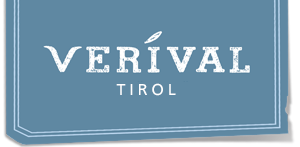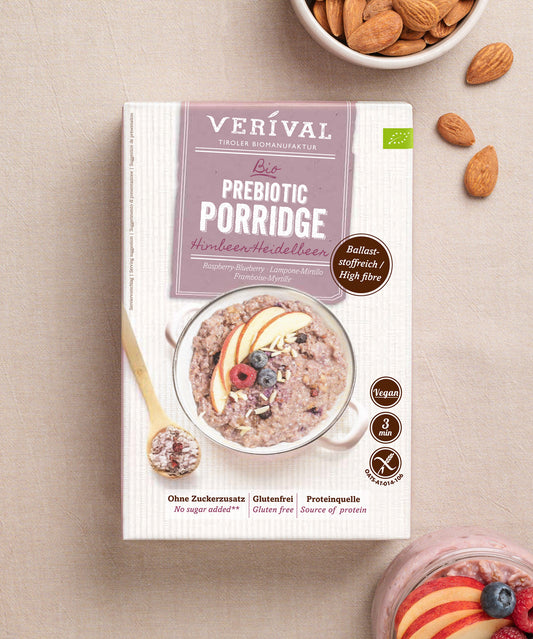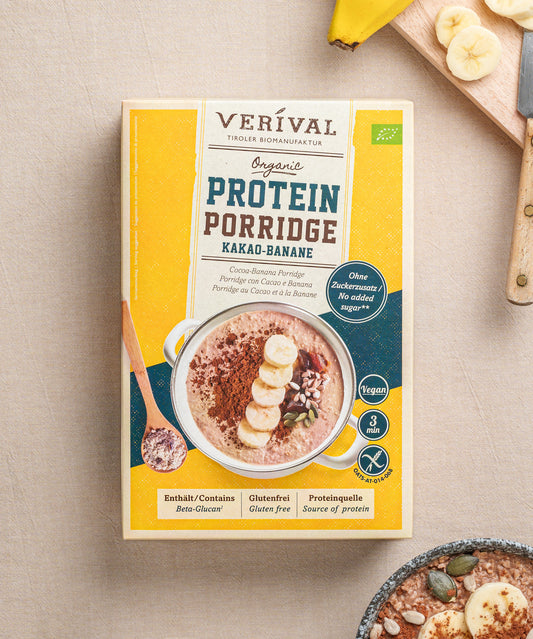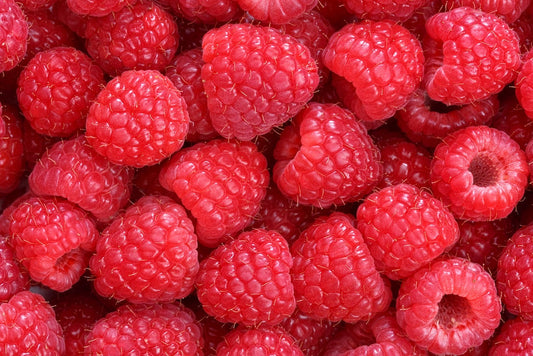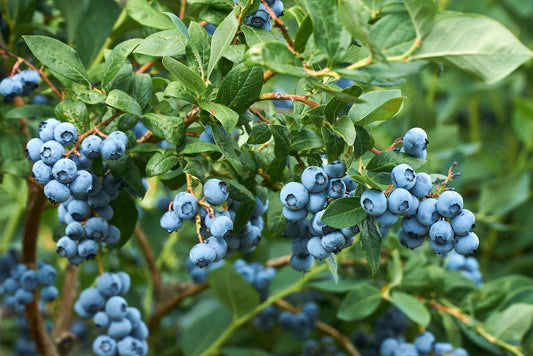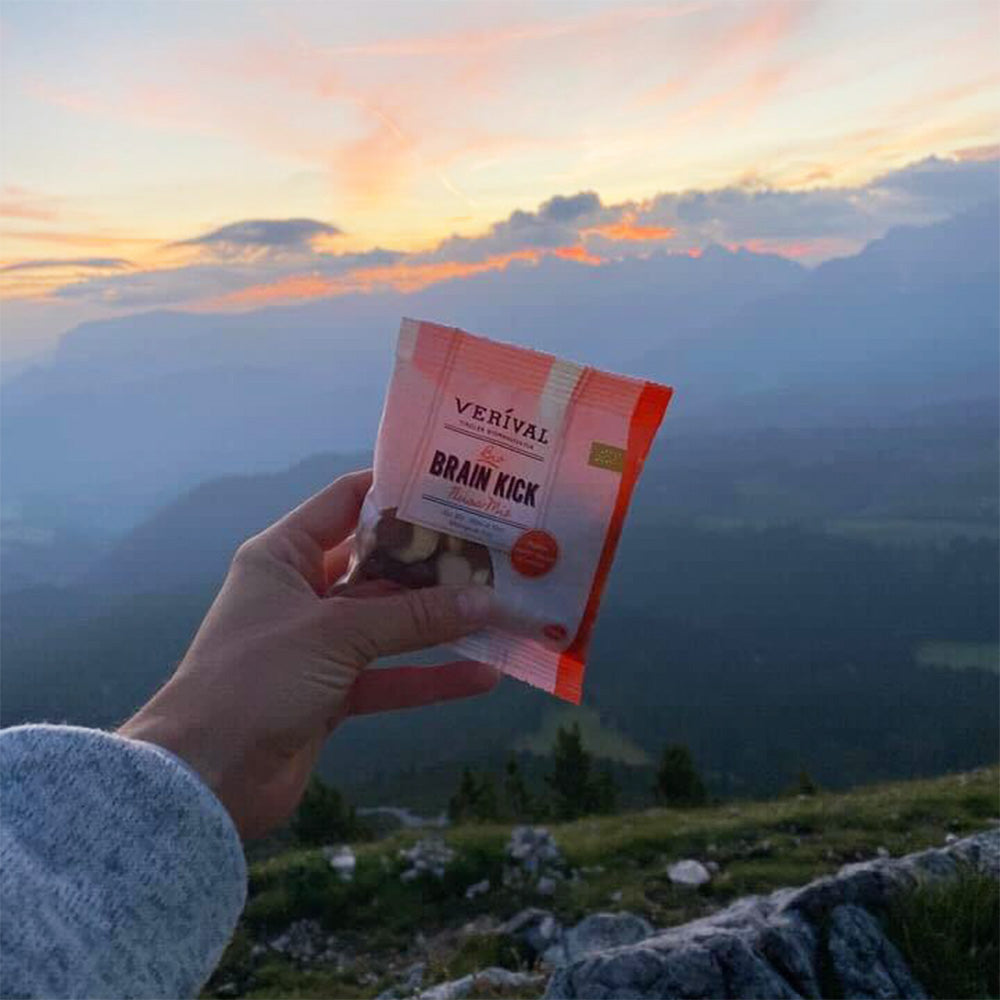A glance at the nutritional values of porridge quickly shows that the delicious breakfast classic is a true all-rounder when it comes to healthy ingredients. Porridge not only contains all the important macronutrients, but also provides a huge amount of vitamins and minerals.
Find out everything you need to know about the nutritional value of porridge and how you can get even more out of your breakfast.
Discover healthy organic porridge from VERIVAL!
How many calories does porridge have?
The ideal breakfast should fill us up so that we can last until lunch without snacks. It should also provide energy and optimally supply our body with nutrients. At the same time, however, it should not contain too many calories so that it does not give us an unpleasant feeling of fullness.
The combination of being satisfying but low in calories is probably one of the main reasons why porridge is so popular with nutrition-conscious people. Although oat flakes are considered to be a high-calorie food, we only need to eat a relatively small amount of them to feel full.
Oat flakes provide approx. 370kcal per 100g. For a normal-sized portion of porridge, you need about 50g of oat flakes. Depending on the other ingredients and toppings, a portion of porridge can usually provide 350-400 calories. However, it is also possible to save a lot of calories. For example, our low-calorie porridge with courgette and oats contains only 290 calories. The grated vegetables provide additional volume and fill the stomach.
What macronutrients does porridge contain?
Macronutrients are the three basic building blocks of our diet: carbohydrates, protein and fat. If you take a closer look at oats, you will quickly see that the local superfood provides an optimal mix of macronutrients.
While the carbohydrates in porridge serve as an energy source, the protein and fat are important for various processes in the body. Protein, for example, contributes to a functioning metabolism and forms the building blocks for our cells.
It is not only essential for our muscle growth, but also for maintaining our organs and bones. Fat, on the other hand, is needed for us to be able to absorb and process fat-soluble nutrients at all.
A fibre content to be proud of
In addition to the basic building blocks of our food, porridge also provides a considerable amount of fibre. With a share of 10%, oat flakes are at the forefront.
When fibre was first discovered, it was not considered to be particularly important. This is because our body cannot use it for energy, as it is an indigestible component of plant-based foods.
However, we now know that it has many other beneficial effects on our body, which is why it is anything but insignificant.
Fibre is known to swell in the stomach, thereby creating a feeling of fullness. It also aids digestion and keeps the intestinal flora healthy by binding toxins from food and transporting them out of the body as they pass through the digestive tract.
Dietary fibres are also considered to be slimming. They cause blood sugar levels to rise only very slowly, thus preventing hunger pangs.
The beta-glucans contained in oats, a type of dietary fibre, can also lower cholesterol levels and reduce the risk of cardiovascular disease.
Porridge as a source of vitamins and minerals
In addition to macronutrients, our food also contains so-called micronutrients, better known as vitamins, minerals and phytochemicals. They support our body, for example, in cell formation, are essential for the immune system and contribute to the normal functioning of our muscles and nerves.
Our body cannot produce micronutrients itself, so they must be taken in through food. Without these little helpers, nothing works.
The following table shows the most important micronutrients found in oats and examples of their functions in the body:
| Micronutrient | Functions in the body |
| Vitamin B1 | Support of muscle and nerve functions |
| Vitamin B6 | Central processes in the metabolism and formation of serotonin |
| Vitamin E | Protects cells from free radicals |
| Magnesium | Cell regeneration and oxygen utilization |
| Phosphorus | Important component of bone |
| Iron | Cell formation and oxygen transport |
| Calcium | Formation of bones and teeth |
Toppings for even better nutritional porridge
With oats as its base ingredient, porridge already provides us with an abundance of healthy nutrients. If you make porridge yourself, you can get even more out of your breakfast with the right toppings, providing delicious variety.
Protein breakfast with nuts and seeds
As vegetarian and vegan diets are becoming more and more popular, vegetable sources of protein are also in greater demand. Nuts and seeds, for example, are a great way to add a little extra protein to your porridge.
They also provide healthy fats and valuable vitamins and minerals . Nuts, for example, are particularly high in vitamins E and B, as well as calcium and magnesium. This way, the nutritional value of your porridge is definitely impressive.
Fruit as a vitamin kick for the nutritional value of porridge
Fruit not only adds variety and colour to your breakfast, but also provides a lot of healthy nutrients.
It's best to choose seasonal and regional fruits to get the most vitamins out of them. By the way, berries are also great for winter storage. This way you can enjoy the sweet fruits even in the colder months.
